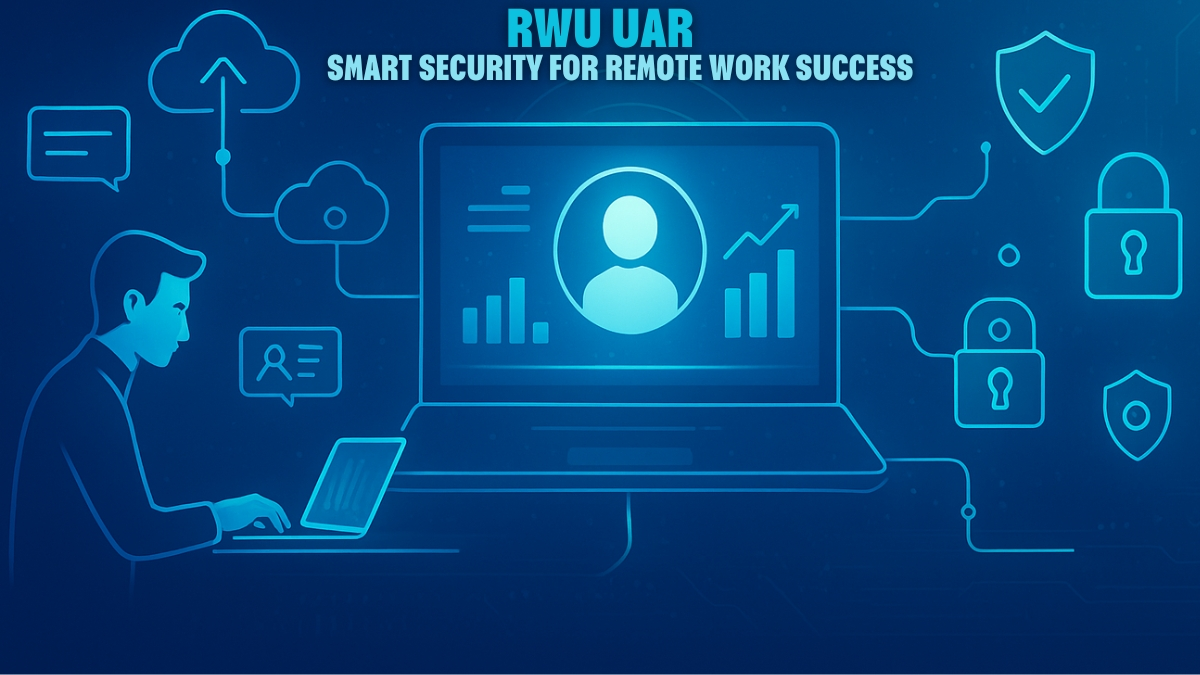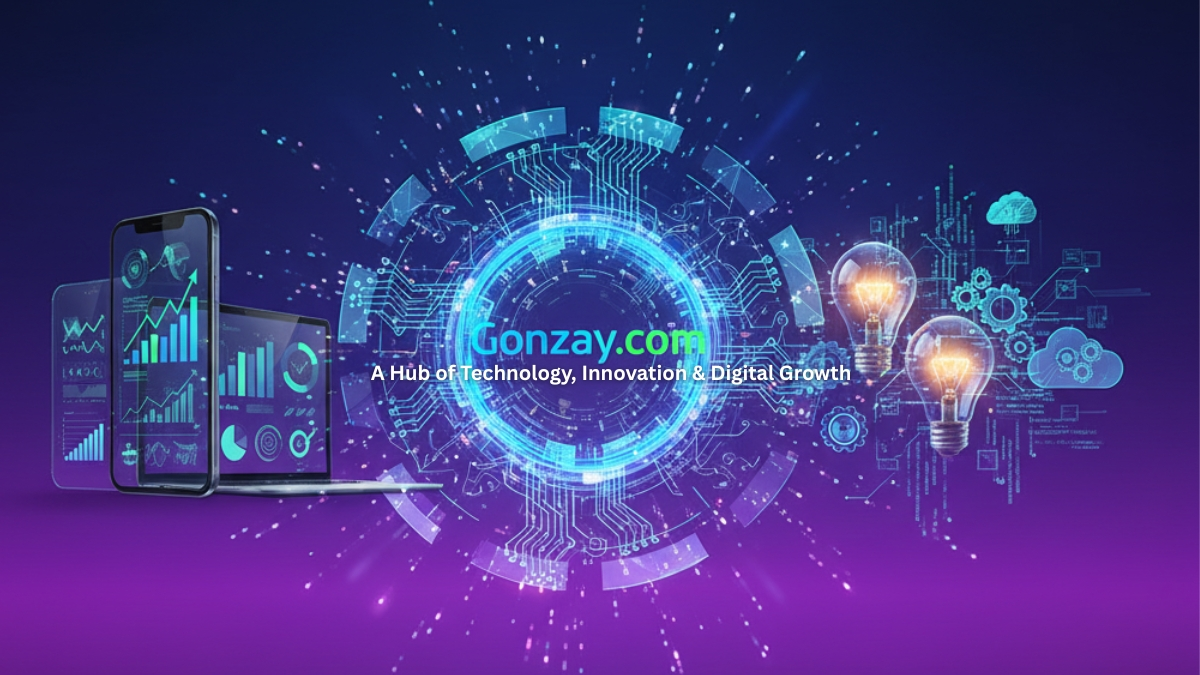Software
RWU UAR: Smart Security for Remote Work Success

The way people work has evolved drastically over the past few years. Remote and hybrid work models have become the new normal for organizations of all sizes. With this shift, two crucial frameworks have emerged RWU (Remote Work Unit) and UAR (User Access Review). Together, they create the foundation for secure, flexible, and compliant digital operations.
RWU focuses on how businesses set up, manage, and optimize remote work infrastructure. UAR ensures that employees only have the right level of access to company data and systems. When both frameworks operate together, they protect organizations from data breaches, unauthorized access, and productivity losses.
In this article, we’ll explore best practices, tools, and governance strategies for managing RWU UAR effectively helping businesses stay agile and secure in a connected world.
Understanding RWU: The Remote Work Unit Framework
A Remote Work Unit (RWU) refers to a structured approach that enables employees to work efficiently outside traditional office environments. It combines technology, policies, and support systems to create a seamless digital workspace.
The key elements of RWU include cloud-based tools, remote collaboration platforms, cybersecurity solutions, and performance tracking systems. Each of these plays a role in keeping employees productive while maintaining data security.
Building a strong RWU framework helps companies respond quickly to challenges like system downtime, communication gaps, or cyber threats. It turns remote work from a temporary solution into a sustainable business model.
Core Components of an Effective Remote Work Unit
A successful RWU relies on several interlocking components. First is secure infrastructure, which includes VPNs, encrypted communication channels, and cloud data storage. These tools ensure sensitive data remains protected, even when accessed from home or public networks.
Next is collaboration technology. Platforms like Microsoft Teams, Slack, and Zoom help maintain real-time communication across distributed teams. Project management tools such as Trello or Asana provide visibility into progress and accountability.
Lastly, monitoring and analytics tools help IT teams assess performance, track productivity, and detect any unusual system behavior. These insights are vital for fine-tuning remote operations and ensuring long-term success.
What Is UAR: Understanding User Access Review
User Access Review (UAR) is the process of evaluating and verifying user permissions within a company’s digital ecosystem. It ensures employees, contractors, and partners only have access to the information and tools necessary for their roles.
Without regular UAR processes, businesses face risks such as privilege abuse, insider threats, and compliance violations. For instance, if a former employee still has access to critical systems, it can lead to serious security breaches.
UAR not only safeguards systems but also improves compliance with regulations such as GDPR, HIPAA, and SOX. It’s a key element of Identity and Access Management (IAM), forming the backbone of secure access governance.
The Importance of Aligning RWU and UAR
RWU UAR might seem like separate domains, but they complement each other perfectly. RWU provides the environment for employees to work remotely, while UAR ensures that access rights remain appropriate and controlled.
In a remote setup, users often access company data from multiple devices and networks. This increases the risk of unauthorized access if permissions aren’t managed properly. UAR mitigates this risk by continuously reviewing who can access what, when, and how.
By integrating both systems, organizations can achieve a balance between productivity and security, enabling employees to work freely while keeping data protected.
Best Practices for Implementing RWU
The first step to establishing an RWU framework is choosing the right set of tools. Businesses should prioritize solutions that support encryption, endpoint protection, and centralized management. Cloud-based platforms like Google Workspace and Microsoft 365 are popular because they integrate communication, storage, and collaboration securely.
Secondly, organizations must define clear remote work policies. These include guidelines on device usage, data sharing, and network security. Training employees on best practices such as avoiding public Wi-Fi or using password managers further reduces vulnerabilities.
Finally, adopting zero-trust architecture ensures that every access request is verified before granting permission, regardless of where the employee is connecting from. This model has become essential in modern remote environments.
Best Practices for Conducting User Access Reviews
Conducting UARs requires a systematic and repeatable process. Start by identifying all systems, applications, and databases where users hold credentials. Create a centralized access inventory to track permissions in real time.
Next, involve departmental managers or team leads in the review process. They understand which employees genuinely need access to certain data or systems. Automated IAM tools like Okta, OneLogin, or SailPoint can help streamline these reviews.
Finally, enforce the principle of least privilege (PoLP) giving users only the minimum access they need to perform their duties. This principle significantly reduces the potential impact of compromised accounts.
Tools That Simplify RWU and UAR Management
The right tools make implementing RWU and UAR easier. For remote work, solutions like Zoom, Slack, Notion, and Jira offer collaboration and task management capabilities. Security tools like NordLayer, Cisco AnyConnect, and CrowdStrike enhance endpoint protection and VPN access.
On the access management side, tools like Okta, Ping Identity, and Microsoft Entra ID help automate user provisioning and reviews. They also integrate multi-factor authentication (MFA), passwordless logins, and adaptive risk detection.
Integrating these technologies creates a cohesive ecosystem that improves user experience while maintaining compliance and control.
Governance and Compliance in RWU UAR Systems
Governance ensures that all RWU UAR activities align with company policies and industry standards. It involves setting up audit trails, approval workflows, and documentation for every access change or review.
Compliance frameworks like ISO 27001 and SOC 2 require organizations to maintain strict access controls and regularly review permissions. Following these standards not only reduces security risks but also boosts client trust.
A well-governed RWU UAR system helps organizations prove due diligence during audits and demonstrate that data privacy is a top priority.
Challenges in Managing RWU UAR
Despite their benefits, managing RWU UAR can be challenging. The most common issues include tool fragmentation, lack of visibility, and employee resistance to new policies. Many businesses also struggle with maintaining consistent reviews across departments.
To overcome these challenges, organizations should invest in automation and continuous monitoring. Automated systems reduce manual effort and minimize human error. Regular employee awareness sessions can also encourage compliance and cooperation.
Ultimately, success comes from a proactive mindset anticipating potential risks and addressing them before they escalate.
Future of RWU UAR: Automation, AI, and Predictive Security
The future of RWU UAR lies in automation and artificial intelligence. AI-driven analytics can detect unusual user behavior, identify potential insider threats, and recommend corrective actions in real time.
Automation will simplify access reviews, making them continuous instead of periodic. With predictive insights, businesses can prevent access-related risks before they occur. This combination of automation and AI will define the next generation of secure remote work frameworks.
As organizations continue to embrace digital transformation, RWU UAR will remain at the heart of safe, scalable, and smart business operations.
Conclusion
The integration of RWU UAR creates a solid foundation for the modern workplace. Together, they enable companies to balance flexibility with security a vital need in today’s digital-first world.
By following best practices, adopting advanced tools, and enforcing strong governance, businesses can protect data, maintain compliance, and empower employees to work confidently from anywhere.
RWU UAR aren’t just technical strategies; they’re part of a long-term commitment to building trust, resilience, and innovation in a connected global workforce.
FAQs
What does RWU stand for?
RWU stands for Remote Work Unit, a framework for managing and securing distributed teams effectively.
What is UAR in cybersecurity?
UAR means User Access Review, a process used to verify that employees have the correct access rights within an organization’s systems.
How are RWU UAR connected?
RWU ensures smooth remote operations, while UAR strengthens access control and compliance, making both essential for secure remote work management.
Why is User Access Review important for remote work?
It helps identify unauthorized or outdated access permissions, reducing risks of data breaches and maintaining compliance.
What tools support RWU UAR implementation?
Popular tools include Microsoft 365, Slack, Okta, and OneLogin for access management and secure collaboration.
Apps
content://cz.mobilesoft.appblock.fileprovider/cache/blank.html: Everything You Need to Know

“The content://cz.mobilesoft.appblock.fileprovider/cache/blank.html path is a secure Android content URI used by AppBlock to manage temporary files safely. It’s not a virus or error. Instead, it reflects Android’s privacy model, which prevents apps from directly accessing each other’s data. Managing your app cache and keeping AppBlock updated ensures smooth performance and data protection.”
In the age of digital distractions, staying focused has become one of the biggest challenges for students, professionals, and even everyday smartphone users. That’s where AppBlock, a productivity app by MobileSoft, comes in. The mysterious-looking path “content://cz.mobilesoft.appblock.fileprovider/cache/blank.html” might seem like a random code, but it actually points to how AppBlock manages files and restricts access to distractions on your Android device.
Understanding how this works gives insight into how AppBlock handles data privacy, caching, and user control — making your digital experience smoother and safer.
What Is AppBlock and Its Purpose
AppBlock is a popular digital wellbeing and focus management tool. It allows users to temporarily block apps, websites, and notifications to reduce distractions. Whether you’re working, studying, or simply trying to spend less time on social media, AppBlock gives you the control to create a distraction-free environment.
The app works by managing access permissions, using Android’s FileProvider framework to handle internal files and cached data safely. This ensures that no external app can misuse your information or bypass restrictions.
Understanding “content://cz.mobilesoft.appblock.fileprovider”
The address content://cz.mobilesoft.appblock.fileprovider/cache/blank.html might look like a technical string, but it’s actually part of Android’s content URI system.
In simple terms, it’s a secure way for one app (AppBlock, in this case) to share or manage files internally without exposing them to external threats. The part “cz.mobilesoft.appblock” identifies the app, while “fileprovider” represents a built-in Android feature that manages access to stored files.
This system prevents other apps from directly reading or writing to your device’s storage, helping keep sensitive data private and preventing potential leaks.
How AppBlock Uses File Providers
AppBlock uses FileProvider for two main reasons: privacy and efficiency. Instead of directly saving blocked site data or temporary cache in an open folder, the app uses the FileProvider method to generate a content:// URI, which is accessible only within the app’s secure environment.
The “blank.html” file, often found in the cache directory, acts as a placeholder or redirect file when AppBlock blocks certain websites or content. So, if you try to open a blocked webpage, AppBlock may redirect you to a blank screen, using that “blank.html” file path.
This design prevents exposure to blocked content and maintains the app’s focus-driven environment.
Privacy and Data Security in AppBlock
Privacy is at the heart of AppBlock’s design. By using FileProvider instead of traditional file paths, AppBlock ensures that other apps or third-party services cannot access your blocked content, browsing data, or usage habits.
Additionally, AppBlock doesn’t store personal data on external servers unless explicitly needed for synchronization. This gives users a sense of confidence that their private information remains on their device.
With the growing awareness of data misuse and privacy breaches, AppBlock’s approach to handling local files through secure URIs is a step forward in mobile data protection.
Benefits of Using AppBlock for Digital Wellbeing
AppBlock isn’t just a technical app; it’s a tool for improving your mental health and productivity. Here are some benefits:
-
Increased Focus: By blocking distracting apps and websites, you can stay present and productive.
-
Better Time Management: Set schedules and limits for entertainment apps to make more time for important tasks.
-
Improved Mental Health: Reducing screen time can help decrease stress and anxiety levels.
-
Parental Control: AppBlock can also be used by parents to manage their children’s device usage safely.
Each feature works through a combination of user permissions, background restrictions, and the FileProvider structure to ensure smooth performance.
How to Use AppBlock Effectively
To get the most out of AppBlock, start by identifying your biggest digital distractions. Then, follow these steps:
-
Download and Install AppBlock from the Google Play Store.
-
Create a Profile — such as “Work Mode” or “Study Mode.”
-
Select Apps or Websites to Block within that profile.
-
Set Timers or Schedules to control when the profile activates.
-
Enable Strict Mode if you want to prevent yourself from disabling the app easily.
As you use it, AppBlock creates temporary cache files — including blank.html — to handle restricted pages efficiently.
Common Issues and Fixes (Blank.html Cache Problem)
Some users notice messages or paths like content://cz.mobilesoft.appblock.fileprovider/cache/blank.html appearing when browsing or using blocked sites. This usually means AppBlock has intercepted your request and redirected it to a blank file to enforce the restriction.
If this file appears frequently or causes slow performance:
-
Clear AppBlock Cache: Go to Settings → Apps → AppBlock → Storage → Clear Cache.
-
Update the App: Outdated versions may store too many cache files.
-
Reboot Your Device: This helps clear temporary data from Android’s memory.
These simple steps usually fix the issue without affecting your profiles or preferences.
AppBlock Alternatives
While AppBlock is one of the best focus apps available, you might explore alternatives if you want different features:
-
Stay Focused – Provides detailed usage analytics.
-
Digital Detox – Uses phone lockouts to build focus habits.
-
Freedom App – Blocks distractions across multiple devices.
Each of these uses similar caching and content management methods, but AppBlock stands out for its privacy-focused design and easy user interface.
AppBlock’s Role in the Modern Digital Landscape
As remote work, online learning, and social media usage increase, the need for self-control apps like AppBlock becomes stronger. People now understand that productivity doesn’t only depend on motivation but also on environmental control minimizing distractions and managing screen time.
The “blank.html” cache mechanism and FileProvider security are subtle but essential parts of how AppBlock empowers users to create better digital habits safely and efficiently.
Final Thoughts
The path content://cz.mobilesoft.appblock.fileprovider/cache/blank.html is more than a technical string it represents the core mechanism that helps AppBlock protect user focus, privacy, and productivity.
AppBlock’s combination of smart blocking, secure file handling, and intuitive design makes it one of the most reliable tools for anyone aiming to build healthier digital habits. Whether you’re a professional, student, or parent, AppBlock ensures that your digital world stays distraction-free and secure.
FAQs
What does content://cz.mobilesoft.appblock.fileprovider/cache/blank.html mean?
It’s an internal Android file path used by the AppBlock app. This link points to a cached placeholder HTML file within the app’s storage and is not an actual webpage.
Is content://cz.mobilesoft.appblock.fileprovider safe?
Yes. It’s completely safe if you downloaded AppBlock from the official Google Play Store. The “content://” prefix is part of Android’s secure file-sharing system, which protects your data.
Can I delete or clear this file?
Yes. You can safely clear it by deleting the AppBlock cache through your phone’s app settings. This won’t affect the app’s main features or stored preferences.
Why does AppBlock create a blank.html file?
The blank.html file is used as a placeholder when AppBlock blocks websites or loads internal pages. It helps display a neutral screen without showing restricted content.
How do I fix AppBlock errors related to this file?
If AppBlock shows any loading issues or “blank.html” errors, clear the cache, update the app, or restart your phone. These steps usually fix temporary glitches.
Business
Master Data Skills with Business Intelligence Exercises

“Business Intelligence exercises teach professionals how to collect, analyze, and visualize data to make better business decisions. Using tools like Power BI, Tableau, and Google Data Studio, these exercises strengthen analytical skills, improve collaboration, and build data-driven cultures. They help organizations predict trends, measure performance, and adapt quickly in an ever-changing market — making BI exercises a cornerstone of modern business success.”
In today’s digital economy, data is at the heart of every business decision. Organizations are flooded with information, but not all of them know how to use it effectively. This is where Business Intelligence (BI) exercises come into play. These exercises help professionals build hands-on experience in collecting, analyzing, and visualizing data for smarter decision-making.
Whether you’re an analyst, manager, or student, BI exercises are the best way to sharpen your analytical thinking and understand how real-world companies use tools like Power BI, Tableau, and Looker to stay ahead. Let’s explore what these exercises involve, why they matter, and how you can start using them to boost your data intelligence.
What Are Business Intelligence Exercises
Business Intelligence exercises are structured activities designed to simulate real-world data analysis scenarios. They help individuals and teams learn how to extract valuable insights from raw data using BI tools and techniques.
These exercises may include creating dashboards, visualizing KPIs, building data models, and performing predictive analysis. The goal is to turn complex datasets into meaningful patterns that guide business decisions.
Think of BI exercises as “data workouts.” Just like physical exercise builds muscle, these challenges strengthen your ability to think critically and use data strategically.
Why BI Exercises Matter for Organizations
For modern organizations, data is an asset only if it can be interpreted correctly. BI exercises train employees to handle this data more effectively. They teach teams how to spot trends, identify performance gaps, and uncover hidden opportunities.
When organizations regularly engage in BI exercises, they develop a data-driven culture. This helps reduce guesswork, improve forecasting, and support evidence-based decision-making across all departments.
Ultimately, these exercises bridge the gap between data collection and real-world action, helping businesses make smarter, faster, and more accurate choices.
Key Components of Effective BI Exercises
The best BI exercises focus on three core elements: data sourcing, analysis, and visualization. Each plays a unique role in developing analytical expertise.
-
Data Sourcing: This involves gathering accurate and relevant data. Exercises often use sample databases or simulated business datasets that include sales, customer behavior, or market performance.
-
Data Analysis: Participants clean, filter, and process this data using BI tools. They identify key metrics such as profit margins, sales growth, or customer retention rates.
-
Data Visualization: Finally, learners build interactive dashboards or reports to communicate findings clearly to stakeholders.
By practicing these components repeatedly, professionals learn not just how to use data—but how to tell stories with it.
Real-World Examples of BI Exercises
BI exercises can be simple or complex, depending on your skill level. Here are a few examples used by professionals and students alike.
-
Sales Performance Dashboard: Analyze sales data by region, product category, and month to identify which areas contribute most to revenue.
-
Customer Segmentation Analysis: Use customer purchase histories to group buyers by age, spending habits, or geography, and suggest marketing strategies.
-
Profit and Loss Reports: Create visual reports that track company performance over time, helping leadership make financial adjustments.
These exercises mimic real business challenges and give you practical skills that can be applied immediately in professional environments.
How to Design Your Own BI Exercise
Creating your own BI exercise doesn’t require advanced tools or expensive software. Start with a simple goal like understanding customer behavior or tracking marketing campaign performance.
Next, collect a dataset from open sources such as Kaggle, Google Dataset Search, or company CRM exports. Use tools like Excel, Power BI, or Tableau to organize and visualize the data.
Finally, challenge yourself with a question such as, “Which product category delivers the highest return on investment?” or “What factors influence monthly revenue fluctuations?” Designing your own BI tasks helps you think like a data strategist rather than just a report builder.
Common Mistakes to Avoid
While practicing BI exercises, many learners fall into common traps that limit their progress. One frequent mistake is focusing on visuals instead of insights creating fancy dashboards that look good but lack meaningful conclusions.
Another common error is ignoring data quality. If your data is inaccurate or incomplete, your analysis will be misleading no matter how polished your charts appear.
Lastly, avoid working in isolation. BI is often a collaborative process involving teams, departments, and clients. Sharing your results and discussing interpretations builds stronger analytical confidence.
Tools That Help with BI Practice
Several powerful tools make Business Intelligence exercises more efficient and realistic. Microsoft Power BI is one of the most popular platforms for building dashboards and data reports. Its integration with Excel and cloud connectivity make it ideal for professionals.
Tableau offers a more visual and interactive experience, perfect for those who prefer drag-and-drop data exploration. It’s widely used by enterprises and is a favorite among data visualization experts.
For beginners, tools like Google Data Studio and Qlik Sense provide free and intuitive environments to practice BI exercises without steep learning curves. Choosing the right tool depends on your goals and comfort level with data.
The Future of Business Intelligence Learning
As artificial intelligence and automation evolve, Business Intelligence is also changing rapidly. Future BI exercises will include machine learning models, predictive analytics, and real-time data integration.
This means professionals who practice BI today are preparing themselves for the next generation of analytics. The focus is shifting from just “what happened” to “what will happen next,” enabling smarter forecasting and proactive decision-making.
Continuous learning through BI exercises ensures that individuals and organizations remain competitive in a data-driven world.
How BI Exercises Improve Career Growth
Learning through BI exercises can significantly boost your career potential. Employers value professionals who can translate data into strategic insights. Completing regular BI challenges enhances your technical knowledge and problem-solving mindset.
It also demonstrates your ability to use real-world tools effectively, making you stand out in roles like Data Analyst, Business Intelligence Specialist, or Operations Strategist.
By mastering BI exercises, you gain the confidence to handle large datasets, lead analytics projects, and contribute meaningfully to organizational success.
Conclusion
Business Intelligence exercises are more than just technical drills they’re stepping stones toward becoming a data-savvy professional. By engaging in regular BI practice, you learn to think critically, handle complex information, and make informed business decisions.
Whether you’re using Power BI, Tableau, or Excel, every exercise strengthens your ability to interpret data in a meaningful way. In a world where information is power, mastering BI exercises ensures that you not only understand the numbers—but know exactly how to use them to drive success.
FAQs
What are Business Intelligence exercises?
Business Intelligence exercises are hands-on data analysis and visualization activities designed to help learners practice using BI tools like Power BI, Tableau, or SQL. They teach how to clean, analyze, and interpret data for better decision-making.
Why should businesses practice BI exercises?
BI exercises help teams develop data literacy, improve performance tracking, and make strategic decisions based on insights rather than assumptions. They also enhance collaboration across departments.
What tools are best for Business Intelligence exercises?
Popular tools include Microsoft Power BI, Tableau, and SQL for database management. These platforms offer dashboards, visualization tools, and real-time data analysis capabilities.
Can beginners learn BI through exercises?
Yes. Beginners can start with simple Excel-based reports or basic Power BI dashboards. Over time, they can progress to more advanced exercises like predictive analytics and automated reporting.
How do BI exercises improve career opportunities?
Mastering BI exercises builds analytical and technical skills that are in high demand across industries. Professionals with BI expertise often qualify for roles like data analyst, BI developer, or business strategist.
Software
Gonzay.com: A Hub of Technology, Innovation & Digital Growth

The website has quickly gained recognition for its detailed coverage of AI technology, business software, and internet trends, along with its reliable digital services in areas like SEO, app development, and Magento solutions. Let’s take a deeper look at how Gonzay.com is shaping the future of the tech and digital marketing space.
Technology Trends Gonzay.com
One of the standout aspects of Gonzay.com is its in-depth reporting on the latest technology trends. The platform regularly publishes articles covering cutting-edge innovations, from artificial intelligence to blockchain and automation.
Readers can explore how these technologies are transforming industries such as finance, retail, and healthcare. Each trend is explained clearly, making complex topics easy to understand. He doesn’t just report on what’s happening it interprets how these changes affect businesses and consumers, helping readers make informed decisions.
Gonzay.com and AI Technology
Their articles discuss topics like machine learning algorithms, AI-driven customer engagement, and ethical implications of automation. Businesses looking to integrate AI solutions can find valuable insights on choosing the right tools and managing AI-driven workflows. Gonzay.com’s commitment to responsible AI adoption makes it a trusted source for professionals aiming to use technology wisely.
Business Software Insights at Gonzay.com
Modern business success depends on the right software. Business Software Gonzay com offers detailed reviews and comparisons of top business software solutions, from CRM systems to project management and ERP platforms.
The site provides expert recommendations on software that helps teams boost efficiency, manage clients, and streamline internal processes. By highlighting the latest innovations in business automation and analytics tools, Gonzay.com empowers organizations to select software that fits their operational needs and budgets.
Internet Trends by Gonzay.com
Staying ahead of internet trends is crucial in the digital economy, and Gonzay.com ensures readers are well-informed. The platform explores changes in online behavior, cybersecurity updates, and global connectivity shifts that shape how people and businesses interact online.
Topics like cloud adoption, data privacy, and 5G innovations are covered in an accessible way. Whether it’s the evolution of e-commerce or the growing influence of remote work, Internet Trends Gonzay com provides up-to-date insights into what’s driving the online world forward.
SEO Agency in Australia by Gonzay
Gonzay.com is more than a content platform it also offers professional SEO services, especially for clients in Australia. Their SEO agency focuses on helping businesses build visibility, drive organic traffic, and increase conversions.
The team uses ethical SEO practices, combining on-page optimization, backlink strategies, and content marketing to improve rankings sustainably. By keeping up with Google’s evolving algorithms, Gonzay’s SEO experts ensure clients stay competitive in search results.
For Australian businesses looking to expand digitally, Gonzay’s local expertise makes it an ideal partner.
Digital Marketing Guide on Gonzay.com
One of the highlights of Gonzay.com is its Digital Marketing Guide, which serves as a complete resource for beginners and professionals alike. This guide explains everything from social media strategy to pay-per-click (PPC) campaigns, content marketing, and analytics tracking.
Each topic is explained with practical examples and step-by-step methods. The goal is to help businesses understand how to build an online presence that converts. It’s marketing insights are designed to help readers grow brand awareness, improve engagement, and generate measurable results.
App Development Services by Gonzay
In the age of smartphones, every business needs a mobile presence. Gonzay.com offers app development service gonzay that cater to startups, enterprises, and entrepreneurs. Their development team specializes in creating high-performance, user-friendly applications tailored to business goals.
From Android to iOS apps, Gonzay ensures each project combines functionality with an appealing design. The agency’s approach involves understanding the client’s vision, developing a smooth user experience, and delivering secure, scalable mobile apps that enhance customer engagement.
Magento Services by Gonzay
For e-commerce brands, Magento development remains a core service at Gonzay.com. Their Magento experts help businesses build customized online stores that are secure, flexible, and optimized for conversions.
Whether it’s setting up an online shop from scratch or upgrading an existing platform, Gonzay’s developers deliver end-to-end solutions. The team also provides maintenance, plugin integration, and performance optimization to ensure smooth operations.
With years of experience in e-commerce, magento service gonzay helps clients harness the full potential of Magento’s open-source platform.
Gonzay com Shopping Guide
Interestingly, Gonzay.com doesn’t limit itself to tech alone. The site also touches on fashion trends, particularly where technology and lifestyle intersect. Readers can find articles on wearable technology, smart fabrics, and how digital innovation is influencing the fashion industry.
This diversity in content makes it unique it blends innovation with creativity, offering insights across multiple modern industries.
Write for Us: Gonzay.com’s Contributor Program
Gonzay.com welcomes contributions from writers, marketers, and industry professionals through its “write for us gonzay com” section. It encourages experts to share insights on technology, business, marketing, and innovation.
Guest authors can submit thought-provoking articles, research pieces, and trend analyses that align with Gonzay’s editorial standards. This not only enriches the platform’s content but also helps contributors build visibility and credibility in the digital community.
About Gonzay.com and Its Agency
At its core, Gonzay.com functions both as a knowledge hub and a digital agency. The platform’s “About Us” section highlights its mission to simplify complex digital topics while offering actionable business solutions.
The Gonzay Agency side focuses on delivering practical digital services SEO, marketing campaigns, app and web development to help clients grow in the digital space. Their blend of technology insight and marketing expertise makes them a reliable partner for innovation-driven businesses.
Gonzay.com on Social Media
Gonzay.com actively engages with its audience through its Facebook page and other social platforms. These channels are used to share the latest news, updates, and success stories.
Through social media, Gonzay connects with readers and clients, encouraging conversation around new technologies, strategies, and creative business solutions.
Gonzay.com Trends in Australia
Australia has become a key market for it’s services and insights. The platform explores Australian tech trends, including the rise of fintech, startup culture, and AI-driven businesses.
By covering local developments alongside global innovations, Gonzay.com helps Australian entrepreneurs understand how international trends apply to their regional markets.
Conclusion
Gonzay.com stands out as a forward-looking platform that bridges the gap between technology, business, and innovation. From AI to marketing, from app development to SEO, the site offers readers and clients a comprehensive look into the evolving digital world.
Its combination of in-depth content, expert services, and active engagement makes it a valuable destination for anyone looking to stay informed, inspired, and digitally empowered.
FAQs
What is Gonzay.com about?
It is a technology and digital marketing platform offering articles, insights, and services related to AI, business software, SEO, and app development.
Does Gonzay.com offer digital marketing services?
Yes, It provides SEO, social media marketing, and app development services, especially for clients in Australia.
Can I write for Gonzay.com?
Absolutely. Gonzay.com invites writers and professionals to contribute to its “Write for Us” section.
What kind of technology trends does Gonzay.com cover?
It covers AI, blockchain, internet trends, business automation, and digital innovation.
Does Gonzay.com focus only on tech content?
No. Besides technology, It also covers fashion, business insights, and lifestyle topics influenced by digital transformation.
-

 News7 months ago
News7 months agoCristian Romero Opens Door to Tottenham Exit as Atletico Madrid Eyes £43 Million Move for Argentina Star
-

 News7 months ago
News7 months agoNancy Mace Faces Criticism and Support After Heated Exchange With Trans Activist at South Carolina Event
-

 Blog8 months ago
Blog8 months agoFeedbackMagazines.org/: A Hub for Engaging Content
-

 Tech8 months ago
Tech8 months agoExploring Eporer: The Digital Revolution You Need to Know
-

 News7 months ago
News7 months agoBluesky confirms new verification system to fight fake profiles and boost user confidence on its growing US-based platform
-

 News7 months ago
News7 months agoPassengers From Luxury Rovos Rail Train Thank Zimbabwe for Support as They Arrive in Victoria Falls After Collision Near Gwanda
-

 News7 months ago
News7 months agoDefense aides say internal Pentagon purge punished them for resisting secretive war agendas in Washington
-

 News7 months ago
News7 months agoRulani Mokwena becomes top managerial target as Orlando Pirates weigh high-stakes coaching change in Soweto

